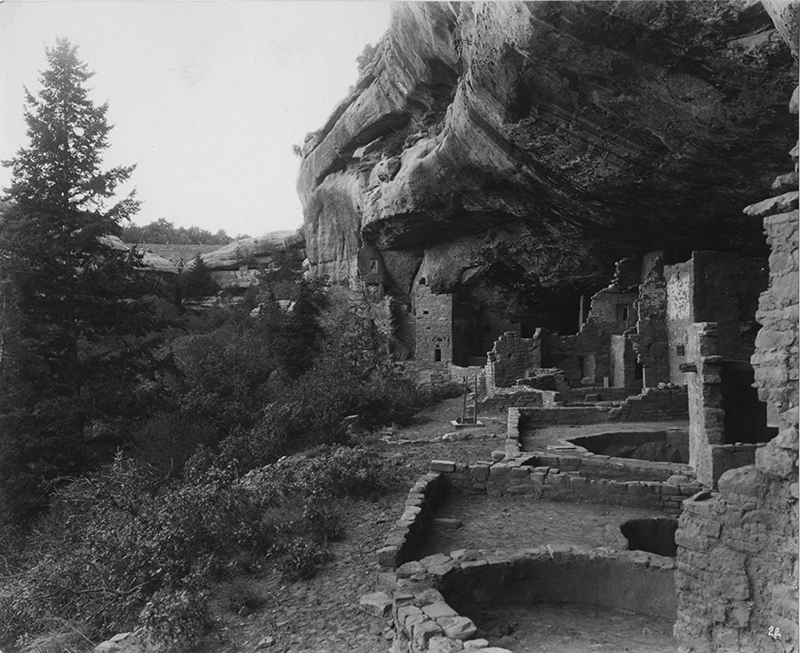
19th, 20th & 21st Century Fine Prints
707-546-7352 · fax 707-546-7924 · web: www.annexgalleries.com · email: artannex@aol.com
Mesa Verde National Park - Spruce Tree House by George Lytle Beam

Mesa Verde National Park - Spruce Tree House
George Lytle Beam
Mesa Verde National Park - Spruce Tree House
George Lytle Beam
1868 - 1935 (biography)The typed description on the verso of this photograph, written by the archivist for the Denver & Rio Grande Western Railroad, reads: "Mesa Verde National Park, (the Land of the Cliff Dwellers), Southwestern Colorado. Reached by Government Auto Road from Mancos, Colo., on the Denver & Rio Grande Western System. / Spruce Tree House, Northern Portion. This is the sencond in size of the prehistoric cliff dwellings in the Park. It is 200 feet long and contained 114 rooms. It is situated but a short distance down the canon [sic], from Spruce Tree Camp, the Park Headquarters, and where visitors are taken care of."
Beam was hired by the National Park Service to document the landscapes that ran along the Denver & Rio Grande Western Railroad system, just prior to the Colorado National Monument's formal opening. Among the documentations was the arrival of President Theodore Roosevelt to celebrate the grand opening of the famous "Hanging Bridge" one of the first and among the longest operating suspension bridges in the U.S.
According the Mesa Verde National Park website, "The cliff dwellings of Mesa Verde are some of the most notable and best preserved in the North American Continent. Sometime during the late 1190s, after primarily living on the mesa top for 600 years, many Ancestral Pueblo people began living in pueblos they built beneath the overhanging cliffs. The structures ranged in size from one-room storage units to villages of more than 150 rooms. While still farming the mesa tops, they continued to reside in the alcoves, repairing, remodeling, and constructing new rooms for nearly a century. By the late 1270s, the population began migrating south into present-day New Mexico and Arizona. By 1300, the Ancestral Puebloan occupation of Mesa Verde ended."
